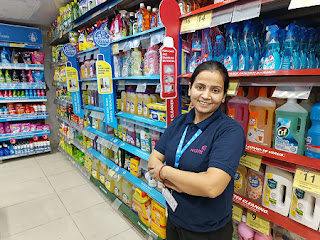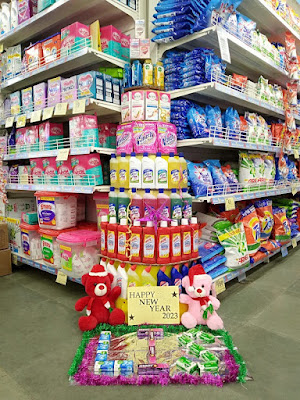Quick Tips for Effective Visual Merchandising!
While the specific techniques you use for visual merchandising are essential, it's also important to remember your overall merchandising strategy.
Here are some tips to get the most out of your visual merchandising:
Understand your customers:
Effective visual merchandising is not just about creating a visually appealing brand and eye-catching displays. Presenting your product should also relate to what is essential to your customers. You need to sell customers what they want, not what they need.
Shoppers always come into stores and buy things they can't live without. Therefore, they do not need to advertise it. Instead, use this opportunity to drive customers to other products they have not seen. Are your customers looking for value for money at an affordable price? Are they looking for a sense of luxury and distinction? Are they trying to keep up with the latest fashion trends?
Your merchandising strategy should consider all this when planning the visual look of your stores and digital channels.
Tell them a story; talk to them!
Consumers decide immediately if they want to look at something in more detail and if they want to keep walking or scroll. That's why it's so important to tell a story that starts with a hook. Once interested, show them what they'll get if they buy the item.
Be creative and get more than just your customers' attention. Can we use sound, touch, smell, or taste to create a multidimensional experience?
Add images that help connect your customers' lives with your product. For example, if your product is a blender, you could show a parent mixing a smoothie with their child in the kitchen. These images create an emotional connection with customers and increase the likelihood of a purchase. You need to constantly monitor your store to know where sales are happening and where they aren't so you can continue to grow and change your strategy.
You need to constantly monitor your store to know where sales are profitable and where they are not. Think light, color, height, and mood.
It's essential to use store design and visual merchandising to create an atmosphere for feeling.
Lighting can direct shoppers' attention to where they want to go. Bright colors on a neutral background can attract a lot of attention. It is essential to focus on the customer. Where do your customers' eyes go when they first see your display? Need help with where to look? You need to look at the show from the customer's perspective. It is essential that every potential client, no matter how tall or small, can be seen the way they want to be seen. Interactive displays can tell people something interesting that makes them stop and listen.
The type of music played in your store says a lot about your products and brand.
Find cross-selling opportunities:
Which products can complement each other? Placing them together on the screen encourages customers to buy them together, increasing the overall size of the basket. Supermarkets are the clearest example of this principle in action. Condiments are always next to the bread. Except, of course, the salsa is next to the tortilla chips. However, other retailers use the same product grouping principles. In addition to Blu-ray players, electronics stores also sell Blu-ray movies. There is a smartwatch next to the smartwatch band.
Use retail sales information to understand which products are frequently purchased together and at what prices.
Check other outlets regularly.
Visual merchandising is more than a set-it-and-forget-it job. You need to constantly monitor your store to know where sales are profitable and where they are not. The architecture of individual displays, stores, and digital platforms is creative. But to remain effective, you need to be data-driven and iterative. In addition, display blindness can occur when customers become accustomed to seeing the same old displays every time they enter a store. You can collect valuable data and keep your customers informed by constantly changing your visual merchandising strategy and trying new things.
Visual merchandising is a comprehensive discipline encompassing marketing, operations, design, and sales to create engaging customer experiences and drive sales. Understanding how to use data to fuel your creative side can be a differentiator in the crowded retail sector. Creativity is the most essential element of visual merchandising.
Ultimately, every brand strives to create the best possible display. The best way to stay ahead of the crowd is to change your shows and be creative with your designs constantly. Creating popular and appealing visual displays requires art and science, and it takes trial and error to achieve.

.webp)


Comments
Post a Comment